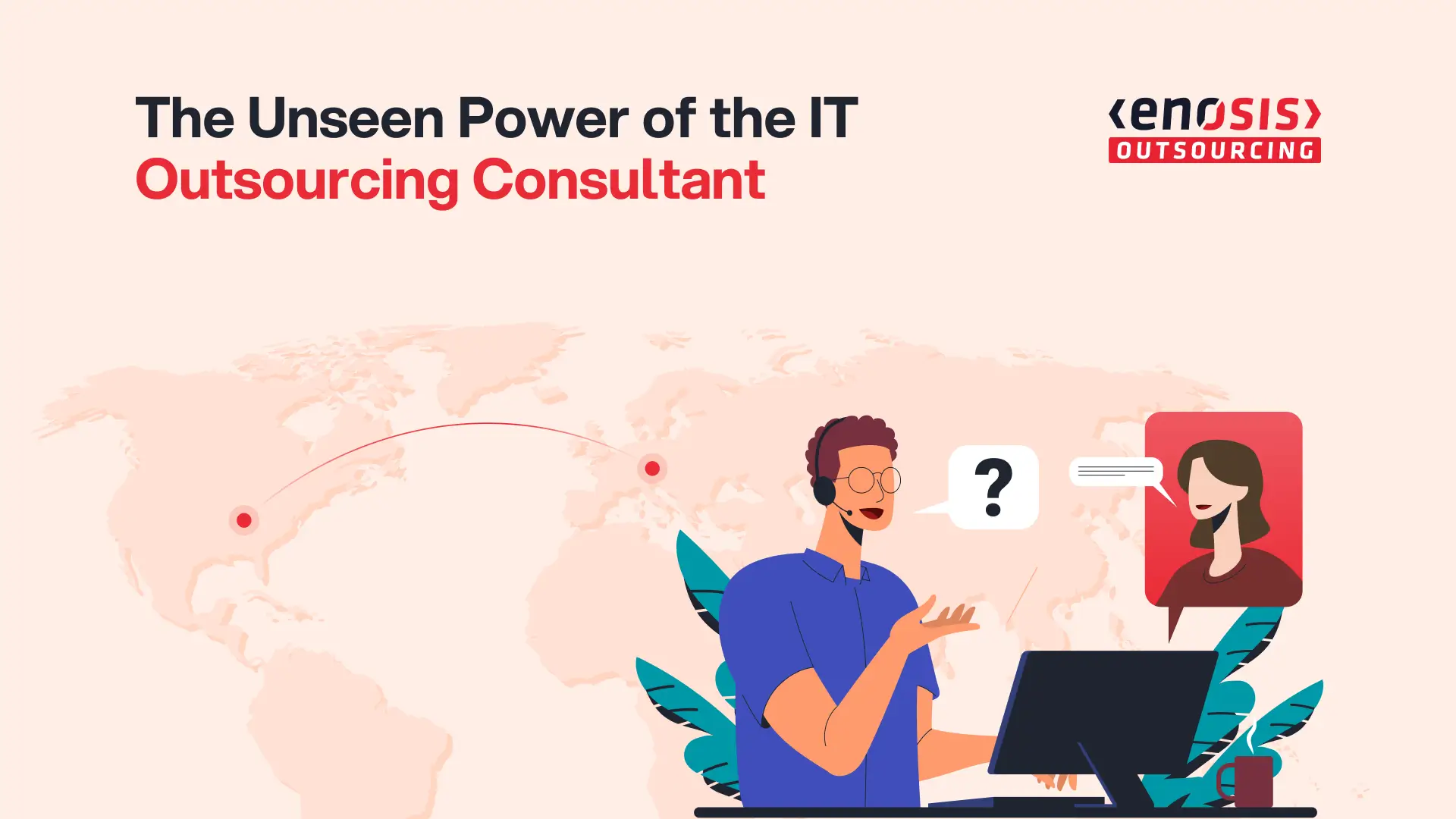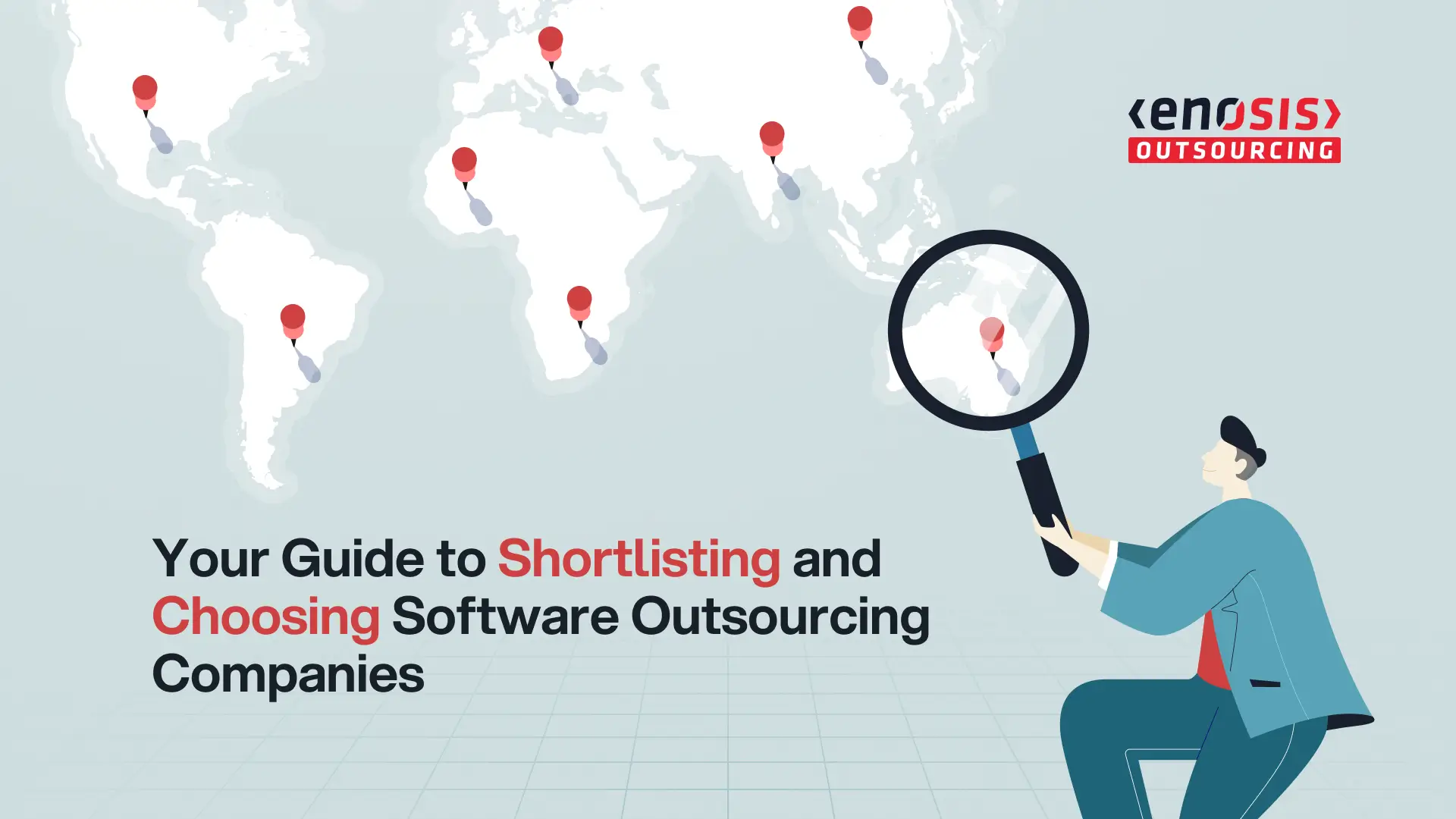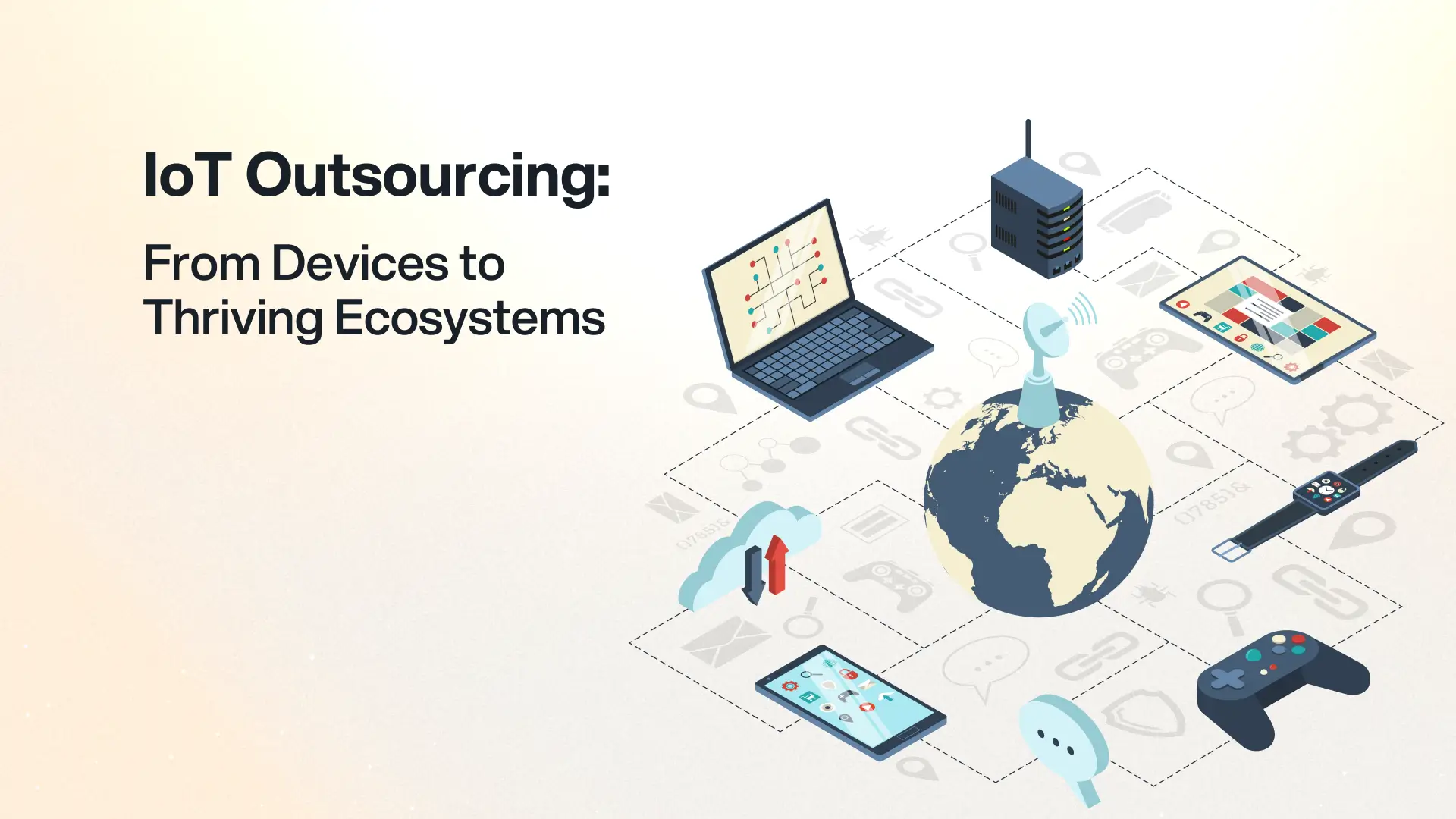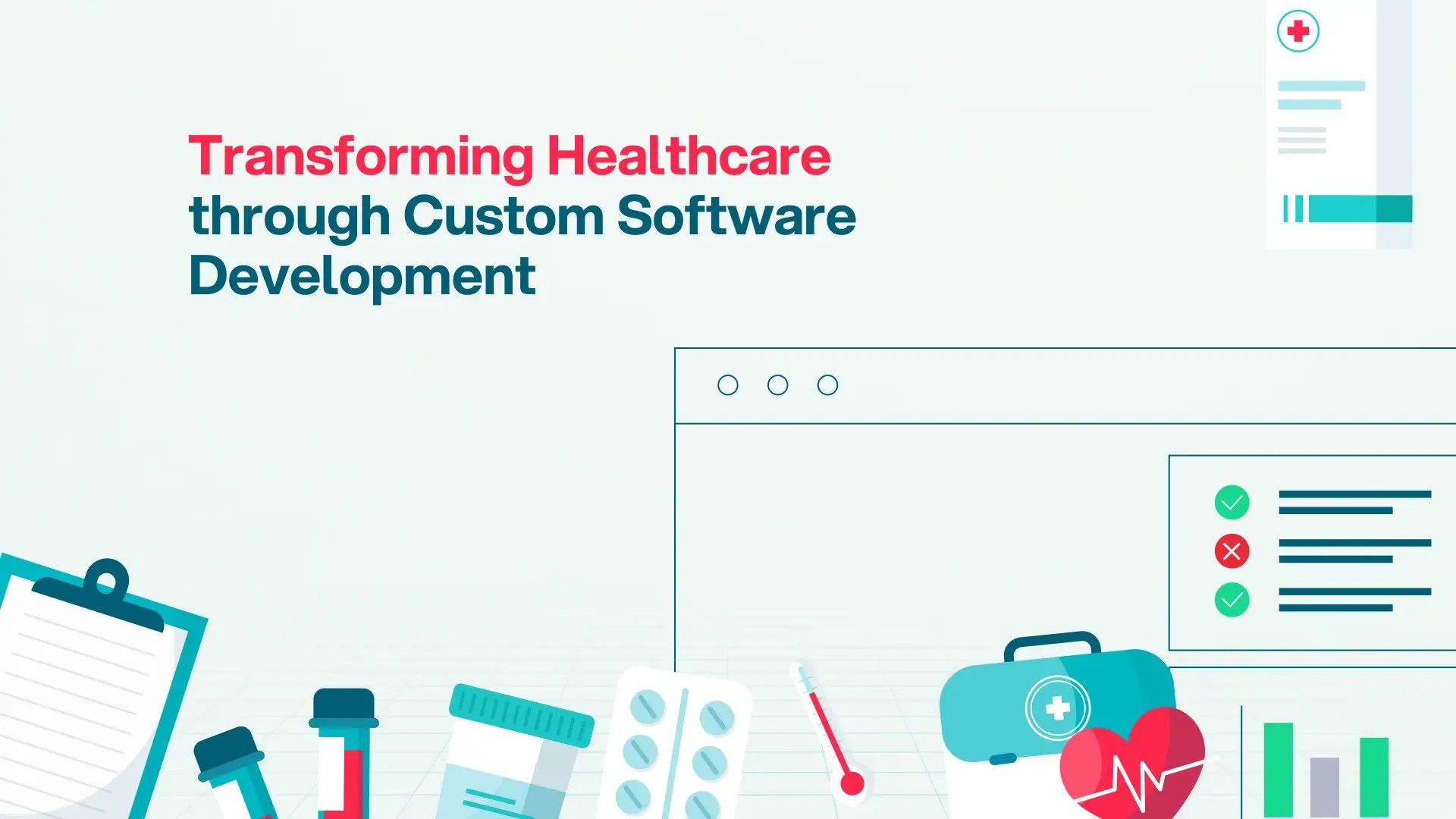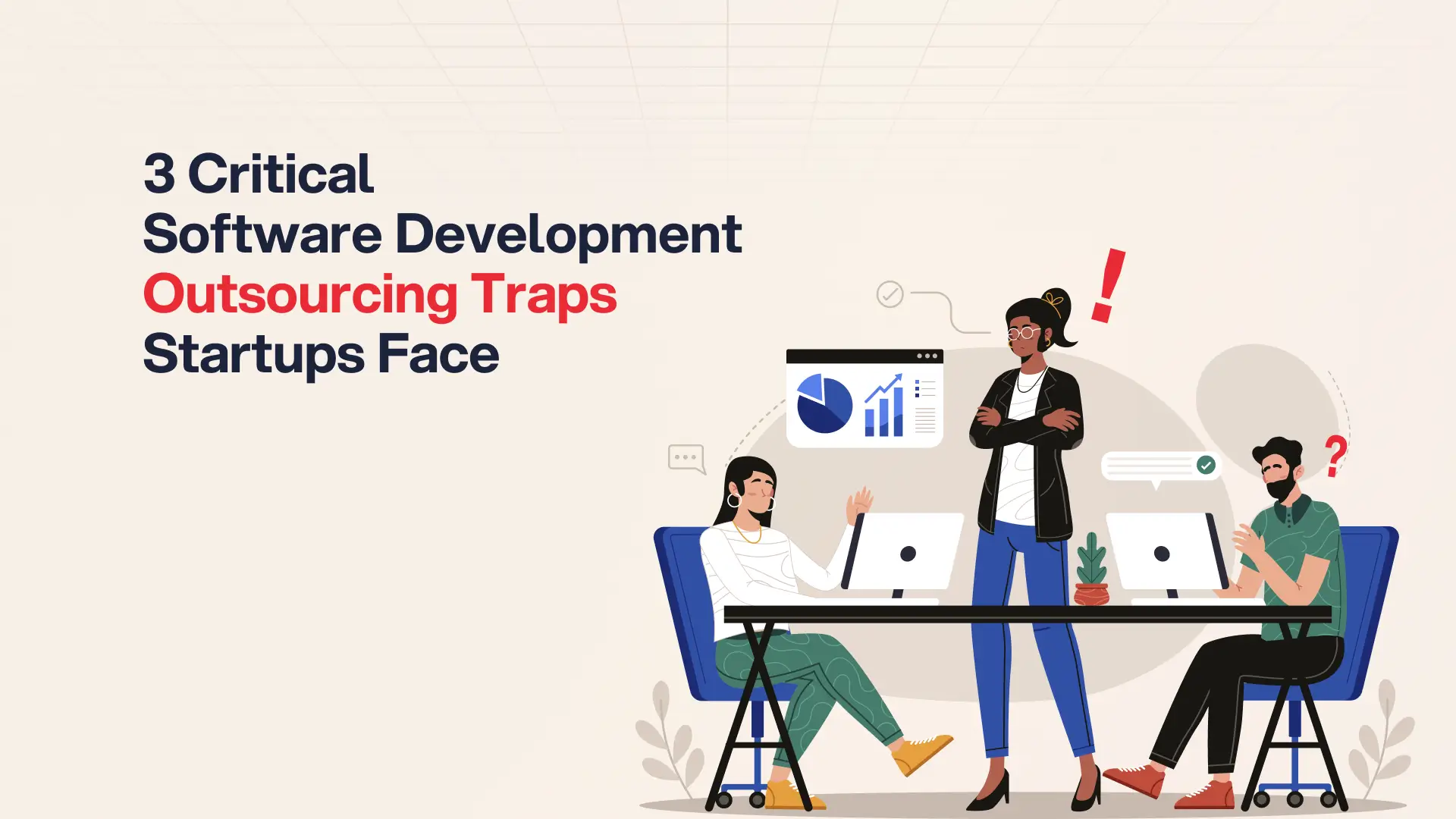Post Activity
 138
138
Table of Content
Share This Post
Table of Content
Imagine your smart thermostat stopped working during a freezing night. Or, a farmer discovered that their costly field sensors have failed. Or imagine a connected medical device that became a hacker’s playground. These are not just hypothetical scenarios. They are the real results of big projects that failed because they thought of building an “Internet of Things” (IoT) device like a simple purchase. IoT is a smarter product than just hardware. It is a commitment to trust, security, and seamless connectivity.
Quick Summary:
Outsourcing IoT development represents more than a way to achieve cost efficiency. It embodies a strategic choice to craft connected ecosystems that endure. A trusted outsourcing partner brings deep expertise, ensures compliance with global cybersecurity regulations, and prepares your product for artificial intelligence advancements.
The Big Shift: More Than Just a Gadget
Years ago, building an IoT device meant celebrating a circuit board’s first internet connection. Teams rejoiced when a tiny data packet reached its destination. But that era has passed.
Today, the real winners are the companies that master the entire system. That includes everything from the tiny chip inside to the ongoing service it provides. We have moved from making single devices to creating complete “ecosystems” of connected products. The plastic and cables are not what make a network of devices worth it. It is the reliable service, relevant data, and fantastic user experience that they can provide.
If you try to manage everything like the hardware, software, connectivity, security, and legal rules, then it is a huge task. So doing it all by yourself can distract you from your main business goals. You will also need a large and expensive team of experts if you want to maintain everything all by yourself.
This is why companies now choose to outsource IoT development. With that, they not only get a device built but also gain access to a team of experts. In this sense, outsourcing is about getting to market faster by using proven experience. Outsourcing IoT also brings the modern service-based economy to the table.
The Parts of the Puzzle: Making Everything Work Together
A connected product may appear simple sometimes. However, beneath its surface lies a complex system of interconnected layers. The same layered architecture drives innovation in other sectors like smart grids, where AI and connectivity power resilience and scale. A skilled outsourcing partner acts as a conductor, ensuring all components function seamlessly together.
The Device and Embedded Software
This is your product’s physical core. It includes the software that runs on the device. A competent partner knows how to deal with heat, power, and other practical issues. They must also incorporate security from the beginning and leverage contemporary connection technologies like Thread, Matter, and Bluetooth. This way, they will be able to prevent hacking.
The Connectivity Layer
Choosing how your device connects to the internet shapes your business strategy. You might need LoRaWAN for long-range communication in open fields, or NB-IoT / LTE-M for smart meters in cities. These decisions influence costs, global scalability, and battery longevity. Technologies like eSIM or iSIM enable one device to work across multiple countries.
The Cloud and Data Layer
Raw data from your devices holds little value until it’s transformed into insights. A robust cloud system, powered by protocols like MQTT, supports features such as predictive maintenance, usage-based billing, or intuitive dashboards. It must scale to handle vast data volumes and integrate with artificial intelligence technologies to remain competitive.
The Management and Operations Layer
After customers receive your product, ongoing management becomes essential. This involves monitoring performance, delivering updates, and resolving issues. An expert partner in modern operations ensures your devices remain reliable, maintaining customer satisfaction and brand reputation. This partner is often referred to as DevOps or SRE.
Thinking of Outsourcing?
Access a wide range of outsourcing companies and find your best fit.
When Things Go Wrong: The Real Cost of Failure
Your prototype performs flawlessly in testing. But unfortunately, when you scale it to thousands of units, issues arise. This is a common story in IoT. These problems often stem from selecting a partner based solely on initial cost, overlooking long-term reliability.
Think about how expensive problems can be:
- Sending a technician to fix or replace one broken device can cost hundreds or thousands of dollars.
- A security breach can ruin your brand’s reputation and lead to heavy fines.
- Having to recall or update all your products can destroy your profits.
Before choosing a partner, ask questions like:
- Do they possess security certifications, such as SOC 2 or ISO 27001?
- Can they provide a Software Bill of Materials (SBOM) detailing all components?
- Is the device software fortified against cyberattacks?
- Do they conduct regular security testing?
These queries ensure your product endures for a decade, not merely a few months.
Security as a Requirement
Previously, IoT security received minimal attention. But things have changed. New laws and regulations around the world are making security a mandatory part of product design. Learn from our ‘Outsourcing Software Development Guide’ how compliance and security are becoming central to modern outsourcing strategy.
Key Regulations to Understand
EU Cyber Resilience Act (CRA): Requires products to be designed with security in mind from the very beginning.
EU Radio Equipment Directive (RED): Will soon include mandatory cybersecurity rules.
UK PSTI Act: As of April 2024, this law bans default passwords and requires companies to have a way to handle security bug reports.
Global Standards: Rules like ETSI EN 303 645 and NISTIR 8259A are becoming the worldwide standard for IoT security.
EU Product Liability Directive: By 2026, this law will make companies responsible for software-related problems in their products.
Failing to follow these rules can lead to fines, product recalls, or being banned from a market.
Ready to Build Your Team?
Let’s create together, innovate together, and achieve excellence together. Your vision, our team – the perfect match awaits.
A Global Approach: Finding Talent Everywhere
The idea of hiring a company from a single low-cost country is outdated. In 2025, leading companies assemble teams from diverse regions, selecting experts tailored to each project’s needs.
A Look at Global Strengths
Countries like Bangladesh are emerging as major hubs for tech outsourcing in this global industry. With strong government support, a growing number of skilled workers, and a young population, the nation is gradually establishing a reputation for providing high-quality IoT services and software.
Smart outsourcing does not always mean finding the lowest price. It also means creating a global team with the most qualified individuals for your project to lower risks and delays.
Looking Ahead: Building for a Smarter Future
The best connected products of the future will not only collect data but also learn, predict, and adapt. Artificial intelligence on devices and integration with advanced language models will change user experiences.
A visionary partner will help you to
- Design adaptable devices ready for future artificial intelligence updates.
- Manage artificial intelligence across devices and cloud environments.
- Develop intuitive interfaces, such as voice or chat functionalities.
- Address privacy and security concerns in artificial intelligence systems.
A partner that is focused solely on current tasks can limit your potential. So you need to select one with a strategic vision for an artificial intelligence-driven future.
Why This Matters in 2025
Outsourcing IoT development transcends cost reduction. It emphasizes:
- Speed: Launching products faster with proven expertise.
- Security: Creating safe and trusted products from the start.
- Market Access: Complying with regulations to sell globally.
- Flexibility: Building products adaptable to an artificial intelligence-driven world.
The physical device is just the start of the journey. Your choice of partner will decide whether that journey ends in failure or leads to a successful, growing ecosystem.
Frequently Asked Questions (FAQs)
What is the biggest mistake companies make when outsourcing IoT development?
Prioritizing initial costs while neglecting long-term expenses, such as maintenance, updates, security, and customer support.
Why are regulations like the EU's CRA or the UK's PSTI so important?
They establish security as a legal obligation. Non-compliance risks substantial fines, product recalls, or market bans. A skilled partner ensures adherence.
How is outsourcing IoT different from regular software outsourcing?
IoT encompasses hardware, software, connectivity, security, and supply chains, far more intricate than developing a website or application.
How can I make sure my outsourcing partner is secure and transparent?
Request a Software Bill of Materials (SBOM), proof of certifications like ISO 27001, and evidence of regular security testing.
Is outsourcing only for big companies?
No. Startups and medium-sized businesses benefit significantly, accessing top expertise without the expense of a large in-house team.
How do I choose a good IoT outsourcing partner?
Seek a proven track record of the company. Do not forget to go through the relevant certifications, global experience. And finally, look into the forward-looking strategy for managing technologies like artificial intelligence.
Find Your Perfect Software Outsourcing Partner
Unlock a world of trusted software outsourcing companies and elevate your business operations seamlessly.

